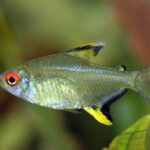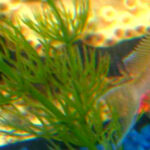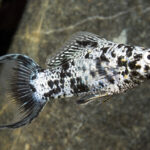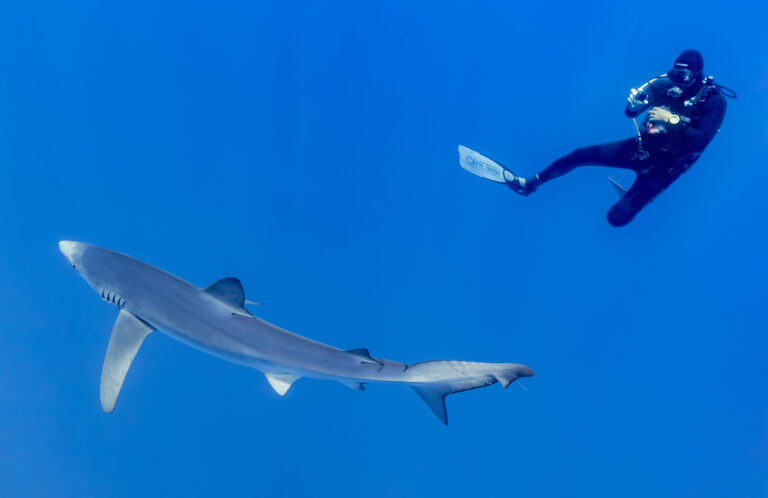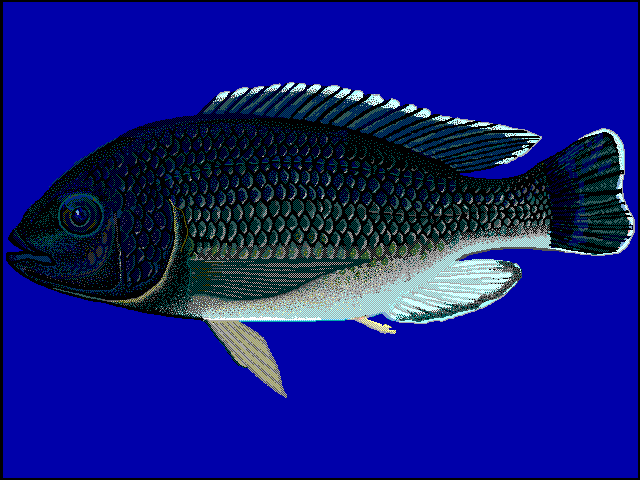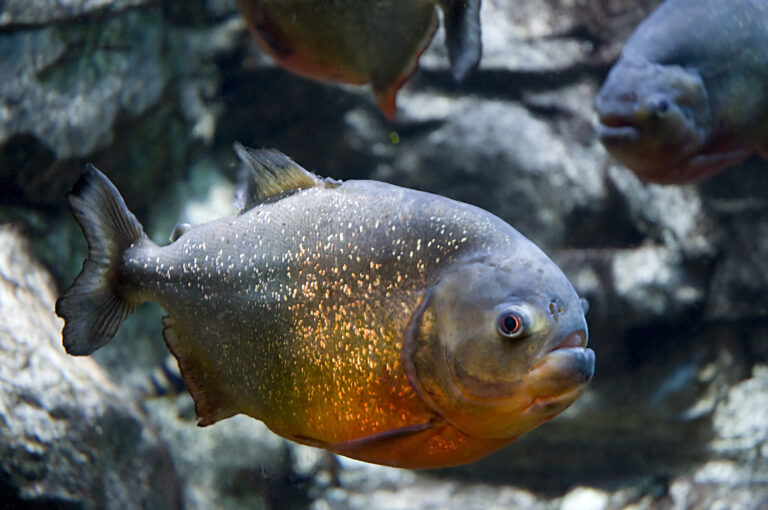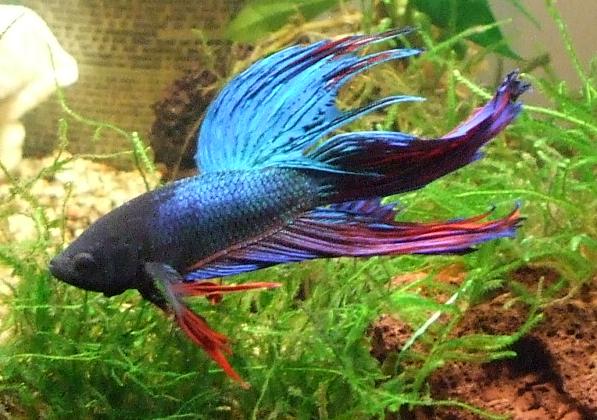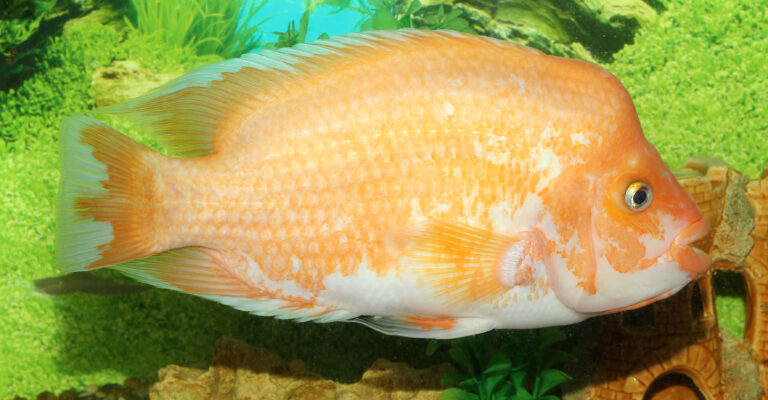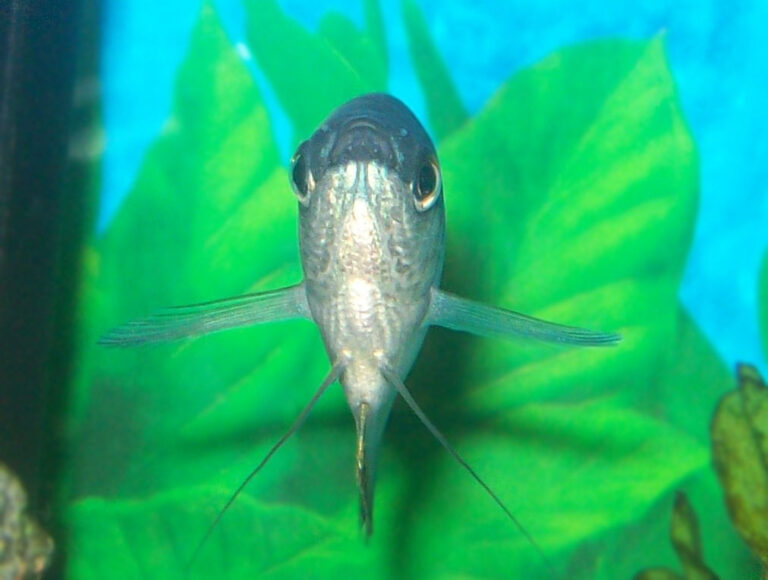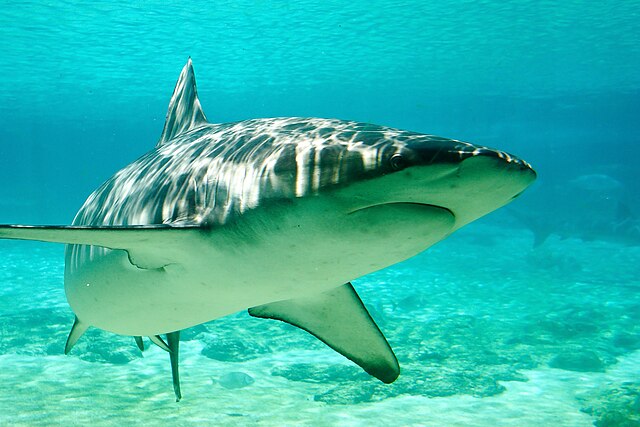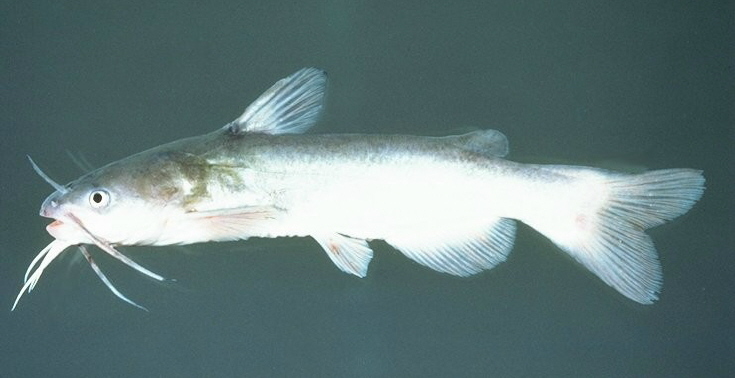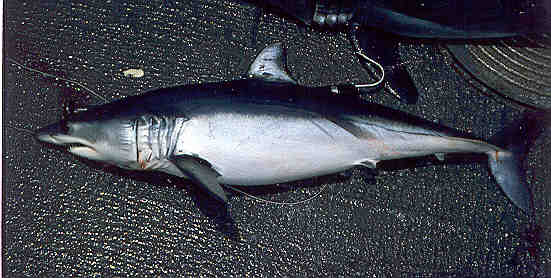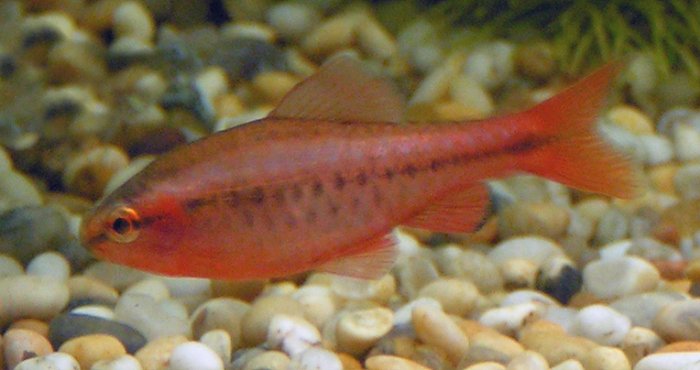Cardinal Tetra
By Ryan Maron | Last Modified: June 7, 2025
The Cardinal Tetra (Paracheirodon axelrodi) stands as one of the most vibrant and sought-after freshwater aquarium fish in the world, captivating aquarists and marine biologists alike with its stunning coloration and peaceful schooling behavior. This small characin species, native to the Amazon Basin, displays a brilliant electric blue stripe running horizontally along its body, complemented by a vivid red band that extends from snout to tail. The Cardinal Tetra plays a crucial ecological role as both predator and prey within South American river ecosystems, serving as an essential link in the aquatic food web while supporting local economies through sustainable collection practices. Unlike many ornamental fish species, Cardinal Tetras maintain their natural behaviors and social structures even in captive environments, making them valuable subjects for behavioral research and conservation education programs.
| Feature | Details |
|---|---|
| Common Name | Cardinal Tetra |
| Scientific Name | Paracheirodon axelrodi |
| Family | Characidae |
| Typical Size | 3-5 cm (1.2-2 inches), 1-2 grams |
| Habitat | Soft-water tributaries and flooded forests |
| Diet | Omnivorous microfauna and plant matter |
| Distribution | Upper Amazon Basin, South America |
| Conservation Status | Least Concern |
Taxonomy & Classification
The Cardinal Tetra belongs to the family Characidae, one of the most diverse freshwater fish families in the world. Originally described by Leonard Schultz in 1956, Paracheirodon axelrodi was named in honor of Dr. Herbert R. Axelrod, a prominent ichthyologist and aquarium enthusiast who contributed significantly to tropical fish taxonomy. The genus Paracheirodon contains only three recognized species, with the Cardinal Tetra being the largest and most colorful member of this exclusive group.
Within the broader classification system, Cardinal Tetras are part of the order Characiformes, which encompasses over 2000 species of freshwater fish found primarily in South and Central America, as well as Africa. The subfamily Tetragonopterinae includes numerous small, schooling species that share similar ecological niches and behavioral patterns. Recent molecular studies have confirmed the close relationship between Paracheirodon axelrodi and its smaller cousin, the Neon Tetra (Paracheirodon innesi), with genetic divergence occurring approximately 5-7 million years ago during the formation of the Amazon Basin.
The taxonomic stability of Cardinal Tetras has remained consistent since their initial description, with no significant revisions or synonyms recorded in ichthyological literature. This stability reflects the distinct morphological characteristics that clearly separate P. axelrodi from related species, particularly the complete red coloration extending from gill cover to caudal peduncle.
Physical Description
Cardinal Tetras exhibit remarkable sexual dimorphism and age-related color variations that make individual identification possible for experienced aquarists and researchers. Adult specimens typically reach 3-5 centimeters in standard length, with females generally displaying more robust body profiles and slightly larger maximum sizes compared to males. The species’ most distinctive feature is the brilliant iridescent blue stripe that runs horizontally from the eye to the adipose fin, created by specialized cells called iridophores that reflect light wavelengths between 450-490 nanometers.
The ventral red coloration extends continuously from the snout tip to the base of the caudal fin, distinguishing Cardinal Tetras from the closely related Neon Tetra, which displays red pigmentation only from the mid-body posteriorly. This red coloration intensifies during spawning periods and stress responses, serving as both a species recognition signal and an indicator of physiological condition. The dorsal surface typically appears olive-brown to dark gray, providing effective camouflage when viewed from above against the substrate and fallen leaf litter of their natural habitat.
Cardinal Tetras possess a compressed, fusiform body shape optimized for efficient swimming in flowing water conditions. Their fins are generally transparent with subtle yellow tinges, and the caudal fin displays a distinctive forked profile that enhances propulsion efficiency during rapid directional changes. The scales are cycloid and relatively large for such a small fish, numbering approximately 31-33 along the lateral line series. The mouth is terminal and small, equipped with fine teeth adapted for capturing microscopic prey items.
Habitat & Distribution
Cardinal Tetras inhabit the upper Amazon Basin across Colombia, Venezuela, and northern Brazil, with the highest population densities occurring in the Rio Negro and Orinoco river systems. These waters are characterized by extremely soft, acidic conditions with pH values ranging from 4.5 to 6.8 and virtually no measurable carbonate hardness. The dissolved organic compounds that create these blackwater conditions originate from decomposing vegetation in the surrounding rainforest, creating a natural environment rich in tannins and humic acids.
Seasonal flooding patterns dramatically influence Cardinal Tetra distribution and behavior throughout their range. During high water periods from May through August, schools disperse into flooded forest areas called várzeas, where they exploit abundant food resources among submerged tree roots and fallen branches. As water levels recede, populations concentrate in permanent tributaries and deeper river channels, creating the high-density aggregations that facilitate commercial collection activities.
Water temperatures in Cardinal Tetra habitats remain relatively stable year-round, typically ranging from 24-28°C with minimal daily fluctuation due to the moderating influence of dense forest canopy. Current patterns vary significantly between microhabitats, from nearly stagnant backwater areas to moderate flows in tributary streams. This habitat diversity allows different age classes and reproductive stages to occupy optimal niches within the same general geographic area.
The species shows strong fidelity to specific water chemistry parameters, rarely venturing into areas where pH exceeds 7.0 or dissolved mineral content approaches levels typical of white-water rivers. This specialization has important implications for both wild population dynamics and successful aquarium maintenance protocols.
Diet & Feeding Behavior
Cardinal Tetras display opportunistic omnivorous feeding behavior adapted to the nutrient-poor conditions of their blackwater habitat. Their natural diet consists primarily of microscopic crustaceans, insect larvae, algae, and detrital organic matter, with seasonal variations reflecting prey availability and water level fluctuations. During flood periods, terrestrial arthropods and plant materials become important food sources as fish gain access to previously inaccessible feeding areas.
Zooplankton forms the cornerstone of Cardinal Tetra nutrition, particularly copepods, rotifers, and small cladocerans that proliferate in the warm, acidic waters of their native range. These prey items provide essential fatty acids and proteins necessary for growth, reproduction, and the maintenance of their brilliant coloration. The species exhibits diel feeding patterns, with peak foraging activity occurring during dawn and dusk periods when zooplankton vertical migration brings prey items into the water column areas most frequently utilized by Cardinal Tetra schools.
Phytoplankton and periphyton contribute significantly to dietary intake, particularly during periods of reduced zooplankton abundance. Cardinal Tetras possess specialized pharyngeal teeth that enable efficient processing of algal materials and small plant fragments. This omnivorous flexibility provides important ecological advantages in environments subject to seasonal resource fluctuations and competitive pressure from other small characiform species.
Feeding behavior exhibits strong social coordination within schools, with individuals following sequential feeding waves that minimize competition while maximizing foraging efficiency. Research has documented specialized feeding roles within schools, including sentinel individuals that maintain vigilance for predators while others focus on prey capture activities.
Behavior & Adaptations
Cardinal Tetras exhibit sophisticated schooling behavior that represents one of the most advanced forms of social organization found among freshwater fish species. Schools typically contain 100-500 individuals in wild populations, with group size varying according to habitat conditions, predation pressure, and seasonal factors. The schooling behavior serves multiple functions including predator confusion, improved foraging efficiency, and reduced individual energy expenditure through hydrodynamic advantages.
Communication within Cardinal Tetra schools relies on visual, chemical, and lateral line sensory modalities. The iridescent blue stripe functions as a visual signal that facilitates school cohesion and coordinate movement patterns, while specialized cells in the skin release alarm pheromones when individuals experience stress or injury. These chemical signals trigger immediate defensive responses throughout the school, including rapid dispersal movements and increased vigilance behavior.
The species demonstrates remarkable adaptability to varying light conditions through behavioral and physiological mechanisms. During periods of reduced visibility, such as in heavily tannin-stained water or under dense canopy cover, Cardinal Tetras rely more heavily on lateral line detection and chemical cues for navigation and social coordination. Color intensity can be adjusted through chromatophore control, allowing individuals to optimize camouflage or enhance social signaling depending on environmental conditions.
Territorial behavior emerges primarily during reproductive periods, when mature individuals establish temporary spawning territories among fine-leaved aquatic vegetation or root systems. These territories are defended through display behaviors and aggressive interactions, with larger individuals typically securing optimal spawning sites characterized by appropriate water flow, substrate composition, and protection from predators.
Reproduction & Life Cycle
Cardinal Tetra reproduction follows seasonal patterns closely linked to water level fluctuations and food availability in their natural environment. Spawning typically occurs during the beginning of the flood season when rising water temperatures and increased food resources create optimal conditions for offspring survival. Sexual maturity is reached at approximately 8-12 months of age, corresponding to adult body lengths of 2.5-3.0 centimeters.
Pre-spawning behavior involves complex courtship rituals where males establish temporary territories and engage in elaborate display behaviors to attract females. These displays include intensified coloration, fin spreading, and synchronized swimming patterns that demonstrate male fitness and genetic quality. Females select spawning partners based on territory quality, male size, and courtship intensity, with larger males typically achieving higher reproductive success.
The spawning process occurs during early morning hours when dissolved oxygen levels are highest and predator activity is reduced. Females deposit 200-500 adhesive eggs among fine aquatic vegetation or root systems, with males immediately fertilizing the scattered roe through broadcast spawning. The eggs are photosensitive and require dim lighting conditions for successful development, an adaptation to the light-limited conditions of their blackwater habitat.
Embryonic development proceeds rapidly in the warm tropical waters, with hatching occurring after 24-36 hours depending on temperature. Newly hatched larvae possess large yolk sacs that provide nutrition for the first 3-4 days of life, during which they remain relatively immobile among vegetation. Free-swimming fry begin feeding on microscopic organisms including paramecia, rotifers, and newly hatched brine shrimp nauplii. Growth rates vary considerably based on food availability and population density, with individuals reaching juvenile coloration patterns after 6-8 weeks.
Predators & Threats
Cardinal Tetras face predation pressure from numerous species throughout their life cycle, with vulnerability varying according to body size, habitat selection, and behavioral patterns. Primary predators include larger characiform species such as piranhas and tetras, cichlids, catfish, and various snake species that frequent shallow water areas during flooding periods. Juvenile Cardinal Tetras experience particularly high predation rates, with survival to adulthood estimated at less than 5% in wild populations.
Avian predators represent a significant threat during daylight hours, particularly when Cardinal Tetra schools approach surface waters for feeding activities. Kingfishers, herons, and other piscivorous birds have evolved specialized hunting techniques for capturing small schooling fish in the complex habitat structure of flooded forests. The brilliant coloration that makes Cardinal Tetras attractive to aquarists also increases their visibility to visual predators, creating a trade-off between social signaling benefits and predation risk.
Habitat degradation poses increasingly serious threats to Cardinal Tetra populations throughout their range. Deforestation, agricultural development, and mining activities have altered water chemistry and flow patterns in many tributary systems, reducing suitable spawning and nursery habitat availability. Climate change effects, including altered precipitation patterns and increased frequency of extreme weather events, may further impact population stability through disruption of traditional flood cycles.
Overcollection for the aquarium trade has historically impacted some local populations, although sustainable collection practices and captive breeding programs have reduced pressure on wild stocks in recent decades. Different tetra species varieties face varying levels of collection pressure, with Cardinal Tetras remaining among the most sought-after specimens in international markets.
Conservation Status
The International Union for Conservation of Nature (IUCN) currently classifies Cardinal Tetras as Least Concern, reflecting their wide distribution range, stable population trends, and adaptability to habitat variations within their native ecosystem. However, this designation masks significant regional variations in population health and habitat quality that warrant continued monitoring and conservation attention from local authorities and international organizations.
Recent population assessments conducted by Brazilian and Colombian fisheries agencies indicate stable or increasing Cardinal Tetra numbers in protected areas and sustainably managed collection zones. The implementation of community-based management programs has proven particularly effective in maintaining healthy population levels while providing economic benefits to local communities through regulated collection activities and ecotourism development.
Conservation challenges facing Cardinal Tetras include habitat fragmentation due to infrastructure development, water pollution from agricultural runoff and mining operations, and potential genetic bottlenecks in isolated populations. The species’ specialized habitat requirements make them particularly vulnerable to environmental changes that alter water chemistry or disrupt seasonal flooding patterns essential for successful reproduction.
International trade regulations under the Convention on International Trade in Endangered Species (CITES) do not currently apply to Cardinal Tetras, although several range countries have implemented national quota systems to prevent overexploitation. Captive breeding programs in commercial facilities have significantly reduced pressure on wild populations while maintaining genetic diversity through periodic introduction of wild-caught breeding stock.
Research priorities for Cardinal Tetra conservation include long-term population monitoring, habitat restoration techniques, and development of sustainable aquaculture methods that can meet market demand without impacting wild populations. Collaborative efforts between conservation organizations, local communities, and aquarium industry stakeholders continue to evolve management strategies that balance ecological protection with economic development needs.
Human Interaction
Cardinal Tetras have maintained profound cultural and economic significance for indigenous communities throughout the Amazon Basin for centuries, serving both as food sources during seasonal abundance periods and as materials for traditional crafts and ceremonies. The species’ brilliant coloration has inspired artistic representations in textiles, pottery, and ceremonial objects, while their predictable seasonal movements have provided important ecological indicators for fishing and agricultural activities.
The modern aquarium trade has transformed Cardinal Tetras into one of the most economically valuable freshwater ornamental fish species globally, with annual export values exceeding $50 million from South American range countries. This trade provides crucial income for rural communities involved in collection, processing, and transportation activities, while supporting broader conservation initiatives through sustainable use programs and habitat protection measures.
Collection techniques have evolved significantly from traditional methods to modern sustainable practices that minimize mortality and environmental impact. Professional collectors now utilize specialized equipment including battery-powered aerators, water quality testing kits, and transport systems designed specifically for small tropical fish species. Training programs conducted by government agencies and conservation organizations have improved collection efficiency while reducing waste and habitat disturbance.
Aquarium keeping has contributed significantly to scientific understanding of Cardinal Tetra biology, behavior, and reproduction through observations made by experienced hobbyists and commercial breeders. Many important discoveries regarding spawning requirements, dietary needs, and disease susceptibility have originated from aquarium-based research that would be difficult or impossible to conduct in wild settings.
The species has also gained importance in environmental education programs, serving as an ambassador species for Amazon rainforest conservation and sustainable use principles. Betta fish care requirements and other popular aquarium species have created broader interest in tropical fish conservation among the general public.
Interesting Facts
Cardinal Tetras possess extraordinary longevity for such small fish, with documented lifespans exceeding 8 years in optimal aquarium conditions and estimated wild lifespans of 4-6 years. This longevity reflects efficient physiological adaptations to the nutrient-poor conditions of their blackwater habitat, including reduced metabolic rates and enhanced cellular repair mechanisms that minimize age-related tissue damage.
The species exhibits remarkable color-changing abilities that extend beyond simple camouflage responses to include complex social signaling and stress communication systems. During aggressive encounters or territorial disputes, individual Cardinal Tetras can rapidly intensify or diminish their red coloration within seconds, creating dynamic visual displays that convey information about motivational state and fighting ability to conspecifics.
Cardinal Tetras demonstrate sophisticated spatial memory capabilities that enable them to navigate complex flooded forest environments and return to specific feeding or shelter sites across vast areas during seasonal migrations. Research has documented homing behavior over distances exceeding 10 kilometers, suggesting advanced cognitive abilities typically associated with much larger fish species.
The species’ scientific name honors two prominent figures in ichthyology: the genus Paracheirodon references the Greek words meaning “near the hand tooth,” while the specific epithet axelrodi commemorates Herbert R. Axelrod’s contributions to tropical fish science and aquarium keeping. Dr. Axelrod’s extensive collecting expeditions throughout South America during the 1950s and 1960s resulted in the discovery and description of numerous Cardinal Tetra populations that remain important for both scientific research and commercial breeding programs.
Temperature tolerance experiments have revealed that Cardinal Tetras can survive brief exposures to water temperatures as low as 18°C and as high as 35°C, although such extremes cause significant physiological stress and behavioral changes. This thermal flexibility may provide important adaptive advantages during climate fluctuations and seasonal temperature variations in their natural habitat.
Angelfish behavioral patterns and other Amazonian species often overlap with Cardinal Tetra habitats, creating complex ecological interactions that influence distribution patterns and community structure throughout the region.
Frequently Asked Questions
How can you distinguish Cardinal Tetras from Neon Tetras?
The primary distinguishing feature is the extent of red coloration along the body. Cardinal Tetras display continuous red pigmentation from the snout to the caudal peduncle, while Neon Tetras show red coloration only from the mid-body area to the tail. Cardinal Tetras also grow slightly larger, reaching 5 centimeters compared to 4 centimeters for Neon Tetras, and typically display more intense blue coloration along the lateral stripe.
What water conditions do Cardinal Tetras require in aquariums?
Cardinal Tetras thrive in soft, acidic water conditions that replicate their natural blackwater habitat. Optimal parameters include pH levels between 5.0-6.8, water hardness below 4 dGH, and temperatures ranging from 24-28°C. Regular water changes with dechlorinated water and the addition of natural tannins from oak leaves or commercial blackwater extracts help maintain appropriate conditions for long-term health and coloration.
Are Cardinal Tetras suitable for beginner aquarists?
While Cardinal Tetras are peaceful and visually appealing, they require specific water conditions and stable environmental parameters that can challenge inexperienced aquarists. Their sensitivity to water quality fluctuations and need for schools of at least 6-8 individuals make them more suitable for hobbyists with some experience maintaining tropical freshwater aquariums. Guppy fish varieties may represent better starter species for new aquarists.
How do Cardinal Tetras reproduce in captivity?
Breeding Cardinal Tetras in aquariums requires specialized conditions including very soft water with pH below 6.0, dim lighting, and fine-leaved plants for egg deposition sites. Conditioning breeding pairs with live foods such as brine shrimp and daphnia for 2-3 weeks prior to spawning attempts improves success rates. Eggs and fry are extremely light-sensitive and require complete darkness during the first week of development, making captive breeding technically challenging but achievable with proper preparation and equipment.
Conclusion
Cardinal Tetras represent one of nature’s most successful adaptations to the unique conditions of South American blackwater ecosystems, combining remarkable beauty with sophisticated social behaviors and ecological resilience. Their continued abundance in wild populations, coupled with sustainable collection practices and expanding captive breeding programs, demonstrates the potential for balancing conservation needs with human economic interests. As ambassadors for Amazon rainforest conservation and examples of successful sustainable use initiatives, Cardinal Tetras will continue to captivate aquarists while contributing to broader understanding of tropical freshwater ecosystem dynamics and conservation strategies.
Share The Article:
More Fish Species:
-
Blue Shark
The Blue Shark (Prionace glauca) represents one of the ocean’s most accomplished travelers, traversing entire ocean basins in epic…
-
Cichlid
Cichlids represent one of the most diverse and fascinating families of freshwater fish, encompassing over 1,700 species distributed across…
-
Red Belly Piranha
The Red Belly Piranha (*Pygocentrus nattereri*) stands as one of South America’s most misunderstood freshwater predators, wielding razor-sharp teeth…
-
Crown Tail Betta
The Crown Tail Betta stands as one of aquaculture’s most distinctive ornamental fish, renowned for its dramatically elongated, spiky…
-
Midas Cichlid
The Midas Cichlid (Amphilophus citrinellus) stands as one of Central America’s most recognizable and ecologically significant freshwater fish species….
-
Blue Gourami
The Blue Gourami (*Trichogaster trichopterus*) stands as one of the most recognizable and adaptable freshwater fish species in tropical…
Discover
-
East Coast Surf Fishing: Targeting Striped Bass and Bluefish from Shore
When I first tried East Coast surf fishing nearly 15 years ago, I was absolutely terrible at it. I…
-
15 Panfish Fishing Secrets: Easy Catches for Beginners & Pros
You know what’s funny about panfish? These little fighters have probably hooked more new anglers than any other species,…
-
Banana Fishing Myths Busted: The Truth Behind Fishing’s Strangest Superstition
Ask any hardcore angler about bringing a banana on their boat, and you might get a reaction stronger than…
-
How to Set Up a Fishing Pole For Beginners
After three decades of teaching friends and family how to fish, I’ve learned that setting up a fishing pole…
-
Dusky Shark
The Dusky Shark represents one of the most ecologically significant yet vulnerable large predators inhabiting coastal and pelagic waters…
-
7 Best Places to Go Fishing in Florida (2025 Guide for All Anglers)
Florida’s known as the Fishing Capital of the World for good reason. With over 7,700 lakes, 10,550 miles of…
Discover
-
Night Fishing for Beginners: Expert Techniques That Actually Work
My first night fishing trip was an absolute disaster. Picture this – fifteen-year-old me, armed with a rusty flashlight…
-
How to Fish in Murky Water: Expert Michigan Angler Shares Secrets
Last Tuesday, I was standing knee-deep in chocolate-colored water where Kellogg Creek dumps into the Kalamazoo River. Water visibility:…
-
White Catfish
The White Catfish represents one of North America’s most adaptable freshwater species, serving as both an important commercial fish…
-
Shortfin Mako Shark
The Shortfin Mako Shark stands as one of the ocean’s most remarkable predators, combining exceptional speed with sophisticated hunting…
-
Cherry Barb
The Cherry Barb (*Puntius titteya*) stands as one of the most recognizable and ecologically significant small cyprinid species in…
-
Smallmouth Black Bass Fishing: Complete Guide for 2025
If you’ve ever felt that sudden, powerful tug on your line followed by an acrobatic jump that leaves your…



